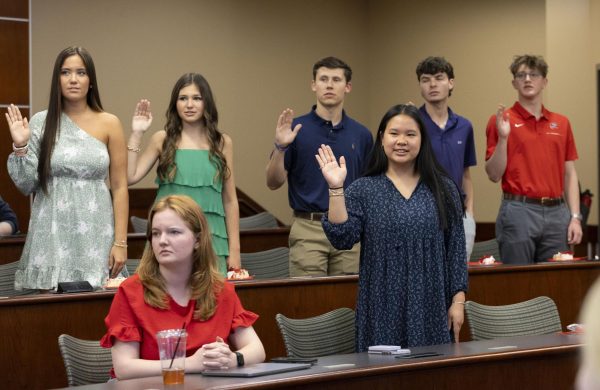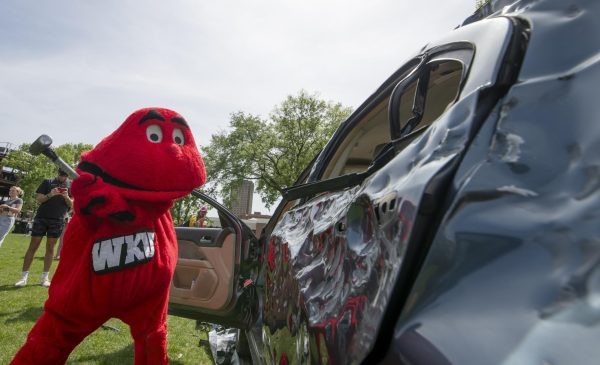Transpark funding secured
September 9, 2003
It’s been one of the region’s most intensely debated issues. Now it’s on the way to becoming a reality.
Five years after getting $6 million to look into the feasibility of the Kentucky Trimodal Transpark, supporters are ready to turn the idea into a reality – much to the dismay of the park’s opponents.
The project isn’t short on public funding. U.S. Sen. Mitch McConnell’s office announced last week that $7 million has been secured in funding for the transpark.
The Senate Transportation Appropriation bill will provide $5 million of the transpark’s funding; the remaining $2 million will go toward sewage improvements, if the bill is passed as proposed.
The City Commission will have its first reading tonight to rezone 236 acres of land within the transpark site from agricultural to heavy industrial.
The land is owned by Helen Wallace-Stahl and optioned by ITA, said Jim Vance, president of the Intermodal Transportation Authority.
Ground was broken Aug. 25 on the transpark, which will be located near 31-W between Bowling Green and Oakland.
A handful of protesters showed up to voice their opposition.
Speakers included local, state and federal government officials. President Gary Ransdell also attended.
Jim Duffer, president of Warren County Citizens for Managed Growth, did not attend the ground breaking.
He said that just because plans for the park are being set into motion, that doesn’t mean he’s giving up on opposing the project.
“In the words of John Paul Jones, ‘We have just begun to fight,'” he said.
Bowling Green Mayor Sandy Jones and Warren County Judge Executive Mike Buchanon shoveled up the first dirt on the transpark site.
Vance said some early work will begin on the park later this year, including construction of the road.
Shortly after the first dirt was turned on the 1,200 acre site, companies began showing interest in moving there.
Magna International Inc., a Canadian-based automotive manufacturing company, recently got preliminary approval for $12 million in Kentucky Industrial Development Act funding, said Terri Bradshaw, Director of Marketing and Communication for the Kentucky Cabinet for Economic Development.
Magna officials would not comment on the proposal.
The company doesn’t have to commit to building in the area to get preliminary approval for the funds, Bradshaw said. Magna is likely looking at several sites.
Vance said he could not comment on Magna considering the park.
He said other businesses are also showing interest in the park.
Not everything is progressing quickly for the transpark, though.
Vance said he is working with the FAA to answer questions the agency raised about how practical a new airport would be to the region.
“The airport replacement process is a long process,” Vance said. “We’re working to finalize the benefit-cost analysis. Next would be the environmental impact survey.”
The environment has been a key issue among transpark opponents.
Geology professor Mike May said he disagrees with the location of the park and how officials have handled the early stages of the process.
May said a thorough geological review hasn’t been done on the site in more than 40 years. He takes issue with the studies ITA has funded.
“You can’t just walk over a bean field and say, ‘We don’t think there will be a problem here,'” he said.
The ITA hired the Center for Cave and Karst Studies at Western to perform a environmental assessment and hydrological review.
Vance said that an environmental impact study will be done after the cost-benefit analysis is complete.
“It’s probably the most studied site in the United States,” he said, laughing.
Reach Josh Coffman at [email protected].




















![Students cheer for Senator at Large Jaden Marshall after being announced as the Intercultural Student Engagement Center Senator for the 24th Senate on Wednesday, April 17 in the Senate Chamber in DSU. Ive done everything in my power, Ive said it 100 times, to be for the students, Marshall said. So, not only to win, but to hear that reaction for me by the other students is just something that shows people actually care about me [and] really support me.](https://wkuherald.com/wp-content/uploads/2024/04/jadenmarshall-600x422.jpg)

